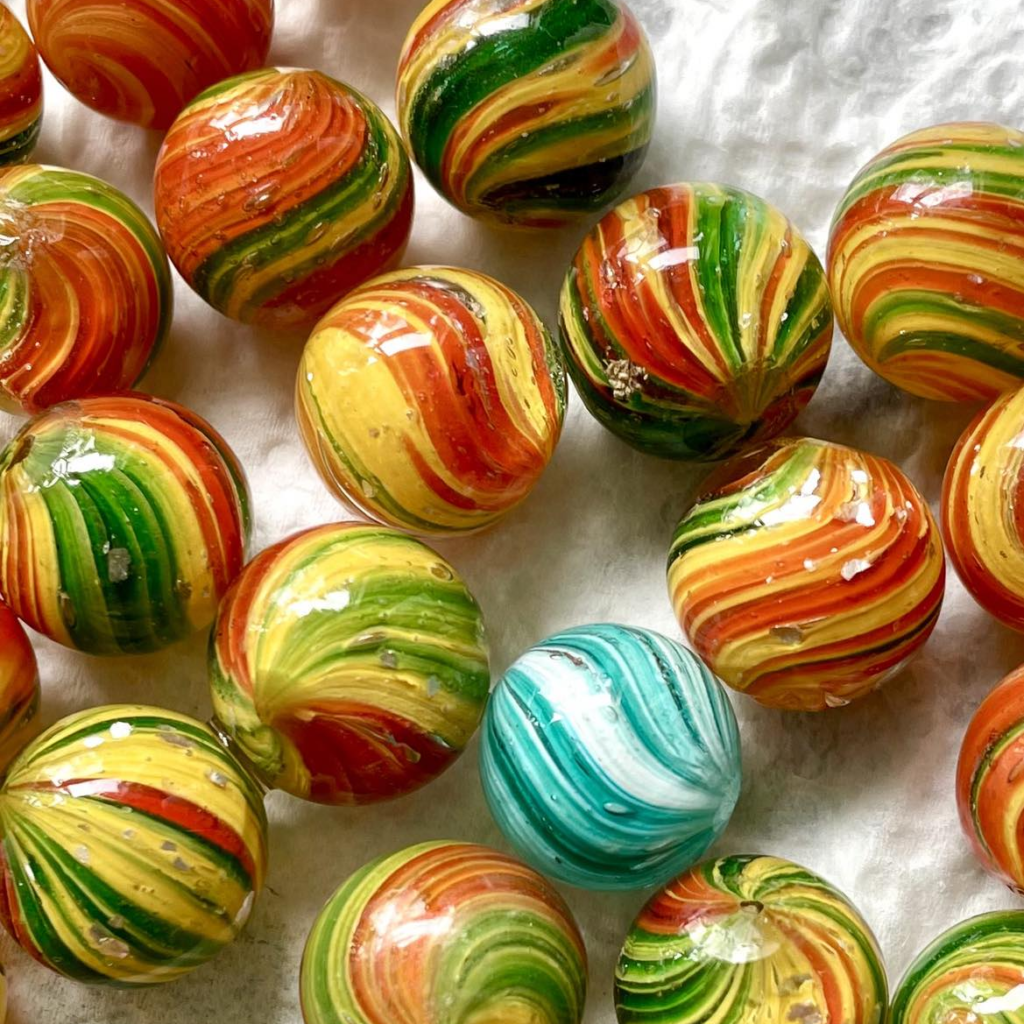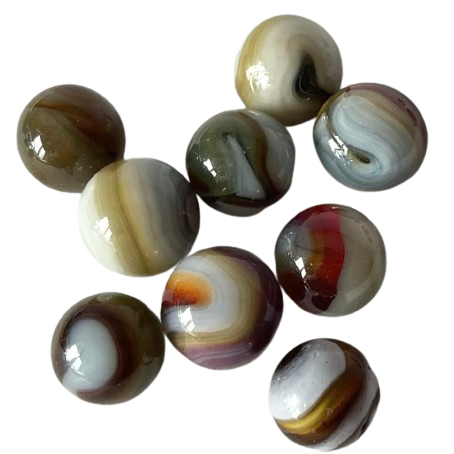With years of experience in antique marbles, we have one of the largest stock of collectable marbles in the UK.

Thanks to our many years of experience in the realm of collectible marbles, our team at Antique Marbles specializes in identifying, grading, and presenting for sale marbles that are not just old, but truly antique—each with its own character and history.
Our expertise extends to a deep understanding of the nuances that define rarity and value in this niche market, from handmade glass beauties of the 19th century to the earthy charm of clay and agate marbles, our collection is a testament to the era when each marble was a masterpiece of individual craftsmanship.
No matter what you’re searching for within the realm of antique marbles, we’re sure to have something special for you. Our diverse collection ensures that every collector finds a piece that resonates with their unique taste and passion.
Grading System
Grading marbles is inherently subjective and not an exact science; therefore, it’s important to rely on your own judgment when evaluating their quality and appeal. While we strive to apply conservative and accurate standards in our grading and descriptions, we are also human and may occasionally overlook details. We encourage you to use your best judgment to decide if a marble meets your personal standards and expectations. Below are the guidelines we aim to follow in our grading process.
1) WET MINT (9.8-9.9) This grade represents the highest quality achievable for a handmade marble over 100 years old that has crossed oceans and been handled for decades. It remains in pristine condition, nearly as perfect as the day it was crafted. The surface of the marble appears shiny and “wet,” showing no significant signs of wear.
2) MINT (9.4-9.7) This grade signifies a marble that is virtually undamaged and shows no clear signs of play. While largely flawless, it may occasionally exhibit minor incidental marks from storage or inherent factory imperfections like cold roll lines, rough or snapped pontils, inclusion bubbles, touch marks, discolorations in the glass, annealing lines, or similar non-play-related issues.
3) MINT- (9.0-9.3) Marbles in this category exhibit very slight or negligible signs of use. They may have minor incidental handling marks, noticeable manufacturing flaws, surfaced bubbles, small fleabite chips, scratches, or slight wear from being carried in a pocket—flaws that are minimal but sufficient to prevent classification as MINT.
4) NEAR MINT+ (8.7-8.9) Marbles of this grade display more flaws than those in the MINT category, including mild to moderate chips or moons resulting from play. The evidence of use remains minimal, preserving much of the marble’s appeal.
5) NEAR MINT (8.3-8.6) A NEAR MINT marble is in collectible, used condition with good visual appeal and is a strong representation of its type. It will show mild to moderate signs of impact damage from play, such as chips, nicks, flea bites, surface dullness from pocket wear, scratches, and internal flaws like reflections, moons, or minor cracks. These marbles, originally designed for impact play, often exhibit some history of use.
6) NEAR MINT – (8.2 & under) We do not sell fully damaged/broken marbles.
The History Of Marbles
Marbles have been found in archaeological sites around the world, including ancient Egypt, Rome, and Native American burial grounds. These early marbles were made from stones, clay, and flint, however it is thought that they were not used as children’s toys until more recent times.
The industrial revolution brought significant advancements in marble manufacturing. In the early 1800s, the invention of marble scissors by a German glassblower enabled mass production of glass marbles.
In the late 19th to 20th century American manufacturers introduced new colors, patterns, and types of glass that became highly sought after by collectors.

